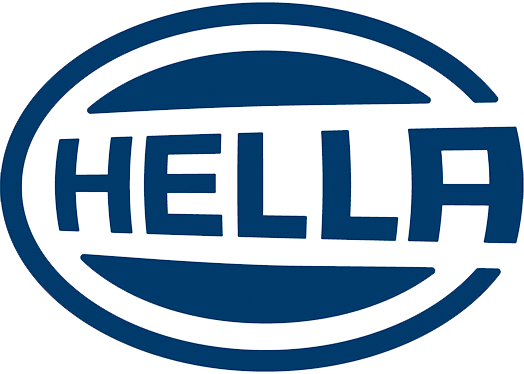

Industry: Manufacturing
Location: Germany
HELLA is a Germany-based automotive supplier that delivers high-performance lighting technology and automotive electronics. The company operates under the umbrella brand FORVIA and has 36,000 employees at more than 125 locations worldwide and generated revenues of $7 billion in its 2020-2021 fiscal year.
Because software plays an increasingly crucial role in the future of the automotive industry, HELLA employs some 2,000 software experts worldwide whose primary focus is developing embedded software for radar sensors, light control, batteries, and steering electronics.
To bring innovative solutions to market faster, HELLA has begun to synchronize its development activities and define cross-divisional process standards and methods for both its customer-facing and internal applications.
"We are currently moving numerous existing applications for production and administration onto a microservices architecture," says Manuel Müller, head of IT base operations for servers and systems at HELLA. "In a lift-and-shift approach, we are migrating legacy web applications for internal users to Kubernetes."
NetScaler has been key to HELLA’s infrastructure for many years and plays an important role in delivering enterprise IT applications. More than 50 NetScaler application delivery controllers (ADCs) are used as reverse proxies in HELLA's data centers and production sites, ensuring high performance and securing business applications.
"We definitely wanted to use our existing NetScaler investments for our microservices architecture and extend the advanced load balancing and traffic management capabilities to our Kubernetes clusters," says Müller.
The goal: Simplify microservices-based application delivery with NetScaler
The HELLA team uses the CNCF-certified Rancher Kubernetes Engine (RKE) distribution for deploying its clusters, which it manages with the SUSE Rancher management platform.
To deliver microservices-based applications to internal users with high availability, HELLA relies on its existing NetScaler ADC infrastructure. NetScaler ADCs route traffic from the clients to microservices inside the Rancher Kubernetes clusters. They provide enterprise-grade traffic management policies like rewrite and responder policies and rate limiting for efficiently load balancing layer 7 traffic. NetScaler ADCs also perform key tasks such as SSL offloading to improve the performance of the backend servers.
As pleased as HELLA was with NetScaler’s capabilities, the team noted that the operational effort was initially very high because they were still doing the majority of their ADC configuration manually.
“Our team spent a lot of time creating policies and ingress definitions for our Kubernetes deployments,” says Gabriel Ile, cloud competence field leader at HELLA. “This slowed down our transformation process considerably."
Automating ADC configuration with NetScaler Ingress Controller
HELLA discovered that NetScaler offered fully automated ADC configuration for Kubernetes environments — at no additional cost. NetScaler Ingress Controller runs as a container within a Kubernetes cluster and converts any microservices-based application's ingress definitions into NetScaler ADC configurations.
HELLA turned to NetScaler product experts to help set up the ingress controller. "We started a proof-of-concept with several web applications and had a fully automated workflow after just a few days,” Ile explains. “The NetScaler product management team gave us valuable advice that we were able to implement immediately to meet our requirements.”
NetScaler supports several deployment options with its ingress controller. HELLA opted for a single-tier topology in which two ADC appliances in a high-availability setup in front of RKE are used as ingress proxies for north-south traffic into the Rancher clusters.
The HELLA team deployed NetScaler Ingress Controller as a standalone pod in the cluster. Setting up NetScaler Ingress Controller with SUSE Rancher was easy for the team because it is listed in the default library of the Rancher catalog and can be deployed via the SUSE Rancher user interface with a few clicks.
The HELLA team used Helm charts to deploy the web applications in the cluster and to publish them to users with an ingress configuration. By using Helm charts, they simplified and standardized the deployment and aligned the process with their CI/CD pipeline.
Along with NetScaler Ingress Controller, HELLA also implemented Argo CD, a declarative, GitOps continuous delivery tool for Kubernetes. The combination of NetScaler and Argo CD enables the seamless application deployment and monitoring of all microservices.
"It was very helpful for us that the NetScaler experts were also familiar with Argo CD, Helm charts, and GitOps," Ile explains. "This made it easier for us to combine the individual components into a complete solution and quickly achieve the desired results.”
Leveraging existing infrastructure and knowledge
After the successful proof-of-concept deployment, the HELLA team immediately knew that it had chosen the right strategy.
"We were able to use our existing infrastructure and skills to implement a consistent traffic management solution for both web-based and microservices-based applications," Müller says.
HELLA is now using NetScaler to deliver several web applications for the HR department as well as microservices-based applications for industrial use that require particularly high levels of resilience.
Automating ADC configuration reduces operational overhead by 50 percent
HELLA's most important goal was met immediately: Operational overhead was massively reduced by automating ADC configuration. Settings that were configured manually via the NetScaler dashboard before are now configured by NetScaler Ingress Controller without the need for administrator intervention.
"We estimate that with NetScaler we have reduced the effort required to deploy our microservices by at least 50 percent," says Müller.
And Ile adds: "The new process is much less prone to errors and supports the stable and reliable operation of our business applications."
Productivity and developer satisfaction have significantly improved
HELLA's software developers benefit greatly from the NetScaler ADC configuration automation. They no longer need to open a ticket whenever they want to publish a new service via the Kubernetes infrastructure. Instead, they create the application in Argo CD, select the appropriate ingress class, and specify to which IP range they would like to expose the service. Then, they just need to spin up the application — and everything else happens automatically.
"Our developers can focus on developing applications and are relieved of activities that are not actually part of their core tasks," says Müller.
Ile says that the feedback from the development teams has been extremely positive: "They told us, ‘Thanks to NetScaler configuration automation, we have now achieved more in two months than in the previous two years.’”
“We estimate that with NetScaler we have reduced the effort required to deploy our microservices by at least 50 percent.”
Manuel Müller
Head of IT
HELLA
Outlook: Further automation and future planning for hybrid and multi-cloud
The HELLA team plans to continue along the automation path. Open-source automation tools like Terraform and Ansible may soon replace manual ADC configuration even in traditional application scenarios. NetScaler offers ready-to-use Terraform scripts and playbooks for Ansible to automate the deployment and configuration of NetScaler ADCs.
For the future, HELLA is already thinking about hybrid and multi-cloud scenarios.
"Even though our infrastructure is currently fully on-premises, we still want to be prepared for the move to the cloud," explains Ile. "Terraform and Ansible enable us to quickly replicate our existing NetScaler modules and automation scripts to support workload portability between on-premises and cloud and between public cloud providers. This not only simplifies provisioning but also ensures consistent configurations of all ADC instances and consistent security policies across multi-cloud."